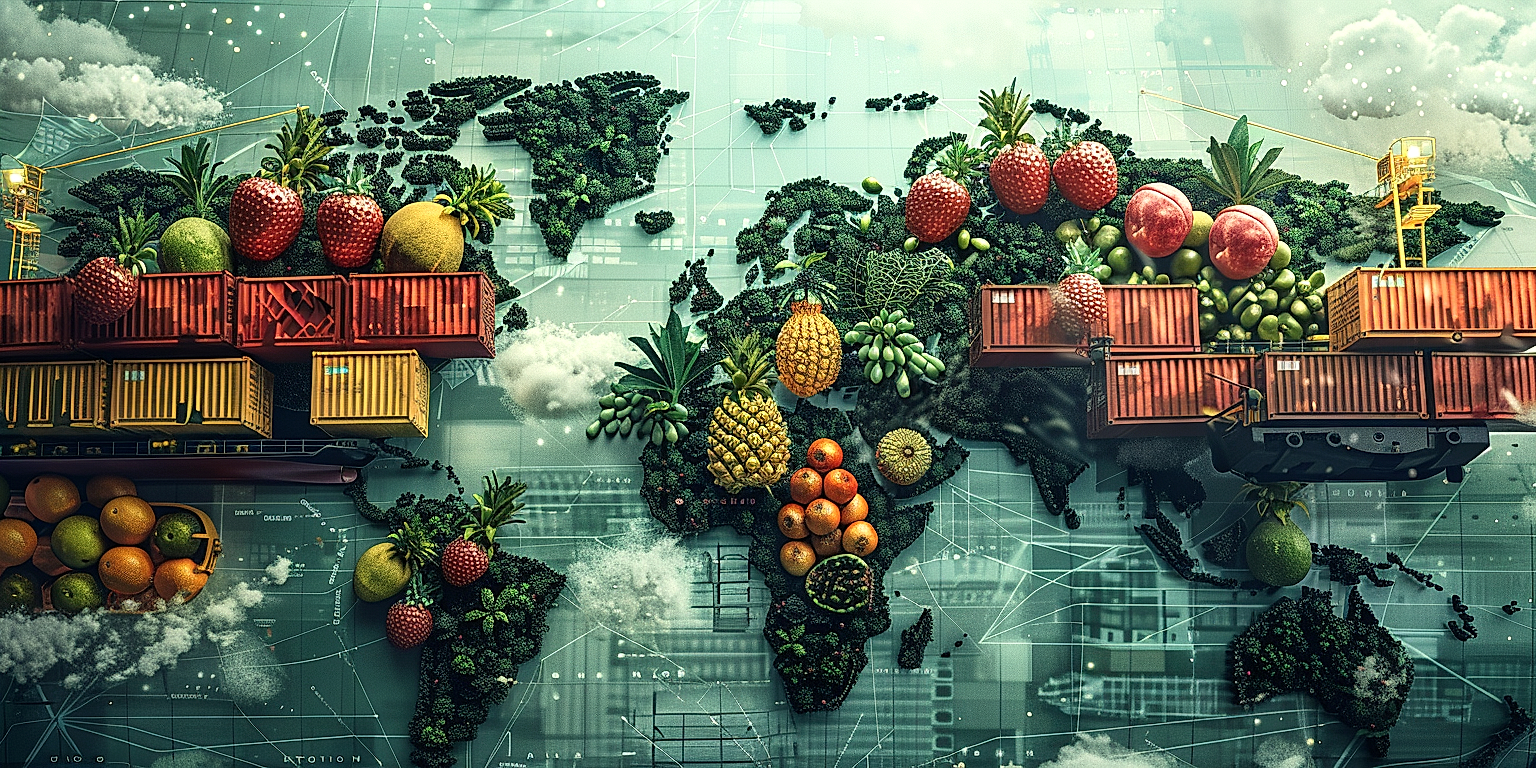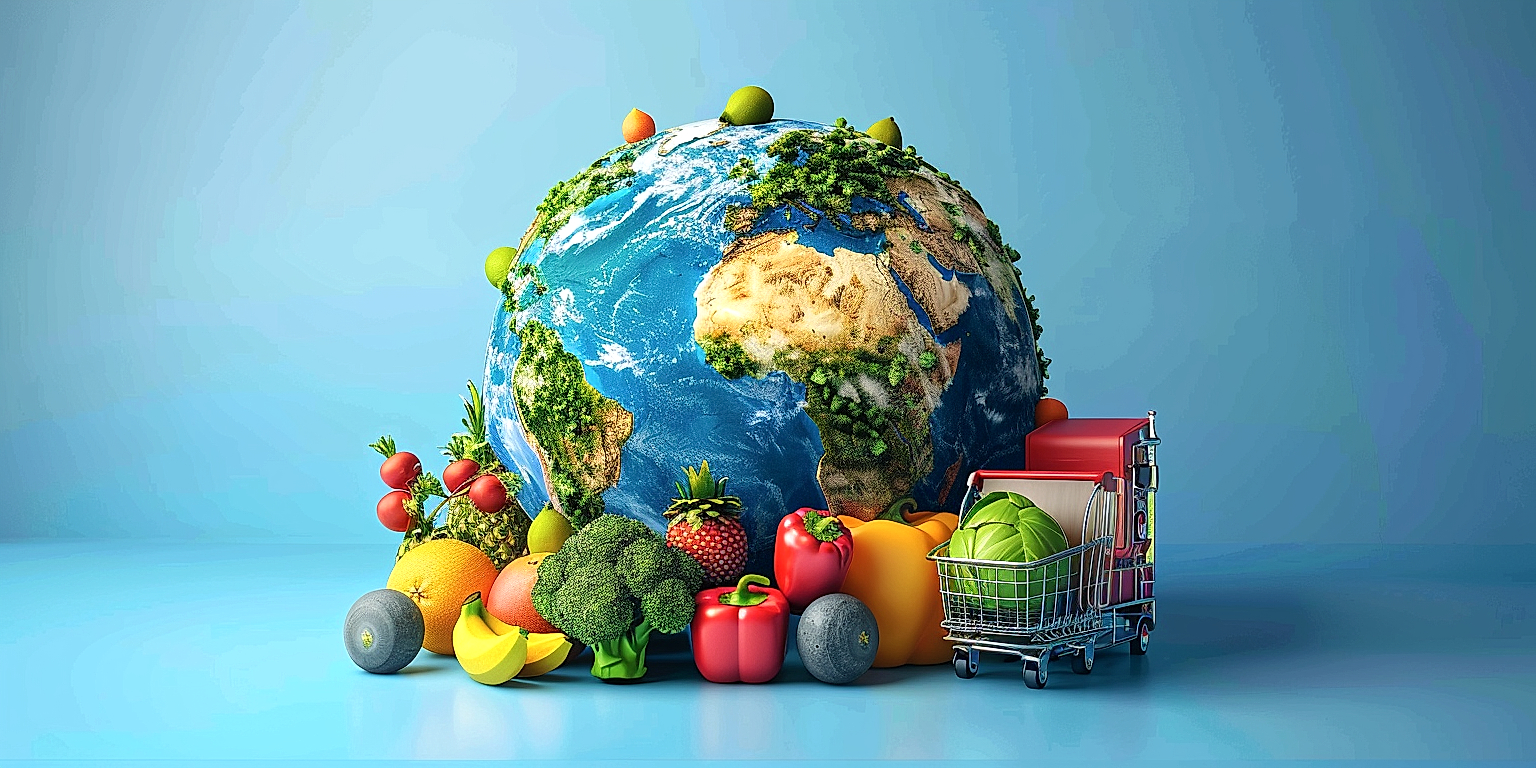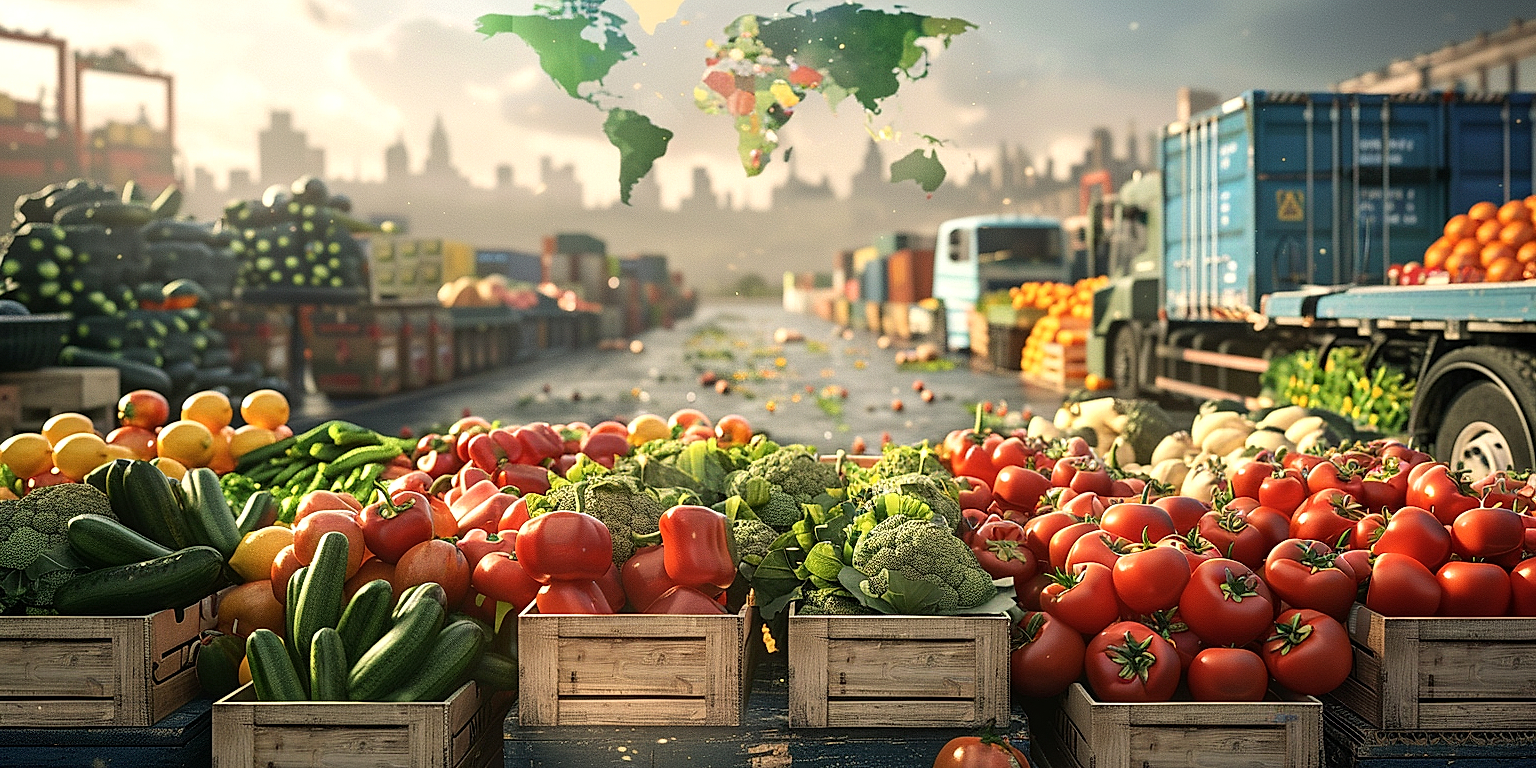Recent shifts in global commerce have significantly impacted various industries, resulting in new impediments and opportunities alike.
Notably, the produce shipping sector is experiencing these transformations considerably.
Within the complexity of changing trade laws, consumer behavior, and environmental issues, it’s necessary for businesses to stay informed and adapt.
Unveiling these global trade trends and their implications will serve as a crucial tool for stakeholders in the sector.
This discussion aims to provide a comprehensive understanding of these dynamics.
By examining these trends, we can further grasp how they’re influencing produce shipping on an international scale.
Insights Into Global Trade Trends Affecting Produce Shipping
1. Increasing demand for exotic, out-of-season fruits
The past few years have seen a considerable increase in consumer demand for exotic, out-of-season fruits from around the globe.
These fruits, often grown in remote or tropical regions, bring varied flavors, unique nutrients, and an element of novelty, which customers find appealing.
The internet-age customers, who have become more aware and interested in culinary diversity and dietary wellness, now seek to mix up their meals with more diverse fruit options.
Additionally, the lure of food from far-off lands and different seasons is stoked by varied lifestyle influencers and culinary celebrities.
Thus, the global trade of exotic, out-of-season fruits has become a significant part of produce shipping operations.
The fruit suppliers and shipping companies are recognizing this demand and are undertaking efforts to meet it by importing a variety of fruits throughout the year.
However, meeting the demand for exotic, out-of-season fruits poses some significant logistical challenges.
Firstly, these fruits typically have a limited growing season and must be carefully harvested and transported to retain their quality.
Secondly, keeping these fruits fresh during shipping requires careful cold-chain management and increased supply chain complexity.
Moreover, regulations and standards for the import and export of fruits vary across different countries, necessitating careful compliance processes.
Despite these challenges, the high consumer demand for these fruits provides a profitable opportunity for those capable of managing the complexities of shipping them.
Shipping companies have started to expand their agricultural shipping options, and fruit producers have also begun experimenting with new growing techniques to extend their growing seasons.
Some have even started to experiment with growing these fruits in greenhouses and other controlled environments to permit year-round availability.
Emphasis on sustainable practices in this industry is also driving innovations that can extend the fruit’s shelf life and reduce waste.
Indeed, the market for exotic, out-of-season fruits promises to remain a transformative factor in the global produce shipping industry for many years to come.
2. Growing adoption of sustainable and green practices
The growing adoption of sustainable and green practices is shaping the landscape of global agricultural trade, particularly in the sector of produce shipping.
More and more businesses are seeing the need and value of shifting towards more sustainable methods of operation.
Sustainable and green practices include maximising the use of renewable resources, minimising waste, and promoting ethical trade standards.
Many businesses in the produce shipping sector are increasingly adopting these practices in response to growing demand from both consumers and regulatory bodies.
In the global produce shipping sector, one of the key sustainable practices being adopted is the reduction of carbon footprints by using fuel-efficient transport or renewable sources of energy.
Companies are also working towards better waste management practices, such as recycling or composting organic waste.
Besides, businesses are adopting more ethical trade standards, ensuring fair wages and safe working conditions for their workers.
A significant proportion of global trade businesses are showing a genuine commitment towards green practices, making this a defining trend in today’s produce shipping industry.
Policies favouring sustainable and green practices are also being introduced, encouraging further adoption of these methods.
At the same time, industries find these eco-friendly initiatives are not only ethical but can also lead to cost savings in the long run.
As a result, these shifts towards greener methods are reshaping the global trade dynamics of the agricultural sector, influencing how products are grown, packaged and transported.
The consumer demand for sustainably produced and traded products is also a key driving factor.
Consumers are indicating a willingness to pay a premium for products that are marketed as being ‘green’ or ‘ethically sourced.’
Additionally, technological advancements are creating opportunities for businesses to adopt new green practices that were previously not feasible.
Overall, the growing adoption of sustainable and green practices represents a significant trend in the world of produce shipping, with sweeping impacts on global trade trends.
3. Impact of Geopolitical Conflicts on Transportation Routes
The global complexities and interactions between countries often lead to various geopolitical conflicts which heavily influence the routes of international trade.
These geopolitical concerns tend to affect produce shipping, primarily when the transportation lines pass through or adjacent to the conflict zones.
For example, the longstanding conflict in the Middle East has led to significant disruptions in oil supply, negatively impacting the cost and efficiency of global trade.
In a similar manner, territorial disputes in the South China Sea have intermittently obstructed shipping lanes, causing concerns for both navigational safety and shipping costs.
Moreover, the imposition of sanctions, blockades, or embargoes due to international disagreements can place immense strain on the global supply chain, complicating the shipment of produce.
Unfortunately, these geopolitical hurdles often result in unpredictable delays and increased shipping costs, which then get passed onto consumers.
Furthermore, in the face of such challenges, global traders may be compelled to seek alternative transportation routes or modes of transportation which might be less efficient or more costly.
Conflict zones also pose a severe risk to the safety of shipments and crew members, leading to increased insurance costs and, in extreme cases, loss of life and property.
It is important to note that geopolitical conflicts are not stationary; they constantly evolve with changing global scenarios, which often make it difficult for international traders to plan their logistics strategy.
For example, traders need to stay updated about the current geopolitical situation, alter their shipping routes if necessary, negotiate with new partners or suppliers, and bear the burden of fluctuating prices.
However, despite these challenges, traders can adopt specific strategies to manage the effects of geopolitical conflicts on their produce shipping operations.
Keeping a versatile portfolio of suppliers from multiple countries can help to guarantee a steady supply of produce despite sudden changes in trade routes caused by geopolitical conflict.
Reliable and real-time tracking systems can also aid traders in closely monitoring their shipments, allowing them to respond promptly to any interruptions or disruptions.
Besides, it is crucial for traders to have a deep understanding of the global landscape and remain agile in their operations to adequately respond to the dynamic nature of global politics.
While geopolitical conflicts pose significant challenges for produce shipping, they also push traders to be innovative and resilient in the face of uncertainties thus playing a decisive role in shaping global trade trends.
4. Rising costs due to global supply chain disruptions.
When it comes to the global trade of produce, significant factors like global supply chain disruptions have been contributing to the rising costs.
Understanding the cause-effect relationship between supply chain disruptions and the rising costs can shed light on addressing the challenges.
The global supply chain is a complex network of interrelated organizations, processes, activities, information, and resources.
Any hiccups or unforeseen circumstances in any part of this chain can potentially cause disruptions that impact the entire system negatively.
This is particularly true for the produce industry that relies on a smooth, efficient, and timely supply chain for transporting perishable items from farms to markets.
Global supply chain disruptions might be due to a variety of causes, including geopolitical conflicts, regulatory changes, weather events, or even global pandemics like COVID-19.
Regardless of the specific cause, these disruptions often lead to increased costs in several ways.
For instance, when a disruption occurs, it typically creates a bottleneck that reduces the efficiency of the supply chain.
This might lead to increased transportation time and costs, as alternative, often longer and less efficient, routes may need to be used.
If a disruption occurs in a part of the supply chain dealing with perishable products like fruits, this could lead to higher wastage.
Such wastage not only leads to financial losses but also increases costs as additional resources have to be invested in re-stocking and reorganizing the supply chain.
Furthermore, disruptions might lead to higher inventory and warehousing costs as organizations may have to hold larger stocks to buffer against unpredictable supply.
In some cases, extreme supply chain disruptions might even force companies to invest in alternative sourcing strategies, thus increasing costs.
Therefore, managing supply chain disruptions is crucial in preventing costs from spiraling out of control.
Keeping a close eye on global trends and adopting proactive strategies like risk management and contingency planning can help mitigate these costs.
Finally, organizations across the supply chain can leverage technological advancements in areas like predictive analytics and automation to better predict and manage potential disruptions.
5. Technological Advancements Improving Cold-Chain Logistics
Within the context of international produce shipping, technological advancements are playing a crucial role in restructuring cold-chain logistics.
The ultimate aim is not only to reduce global supply chain disruptions but also to embrace the increasingly rampant demands for year-round, out-of-season fruits.
One of the most significant aspects of these advancements is the steady improvement in refrigeration technologies.
These technologies have enabled the preservation of produce for extended periods without quality degradation, making it possible to transport perishable goods across great distances.
The role of technology in enhancing cold-chain logistics aims at ensuring the delivery of fresh produce, even from far-flung global locations, in a timely and cost-effective manner.
In line with this, systems for accurate real-time monitoring of temperature and humidity inside refrigerated containers are becoming increasingly prevalent, ensuring that produce maintains their optimal freshness during transit.
In addition, the rise of IoT and data analytics has provided innovative solutions to track and predict potential disruptions along transportation routes.
This prediction mechanism enables anticipatory adjustments, thereby preventing potential losses attributable to weather changes, geopolitical instabilities, or other logistic challenges.
Further, beyond preserving produce quality, technology has improved fuel efficiency, reducing the carbon footprint through the adoption of sustainable and eco-friendly green practices in line with global sustainability commitments.
Moreover, AI and machine learning have been instrumental in enhancing logistical efficiencies by optimizing route planning and enabling predictive maintenance of refrigerated containers, reducing downtime and associated costs.
This utilization of technology not only enhances the entire cold-chain logistics’ reliability but also speeds up the produce shipping process.
Undeniably, these technological strides are not without challenges, with cost and accessibility to these advanced solutions topping the list.
Despite this, the potential gains from adopting such sophisticated systems are tremendous, and stakeholders are increasingly recognizing this, pushing the global produce shipping industry into a new phase.
Therefore, the impact of technology on cold-chain logistics cannot be overemphasised, as it holds the key to shaping the future dynamics of produce shipping.
It is a fundamental pillar whose influence cuts across all aspects of produce trade, from demand and supply dynamics to transport and regulatory considerations.
The Bottom Line
The demand for exotic, out-of-season fruits is on the rise, necessitating continued improvements in cold-chain logistics.
Technical advancements in this field are paramount, especially as global supply chain disruptions send costs soaring.
Additionally, these disruptions underscore the importance of alternative transportation routes, highlighting the significant influence of geopolitical conflicts on this sector.
At the same time, society’s growing expectation for sustainable and green practices is influencing the agriculture and transportation industry, creating a positive drive toward more eco-friendly logistics.
The unstoppable confluence of these factors is propelling the transformation of agricultural transportation in ways we could never have envisioned a few years ago, promising a future of exciting possibilities and challenges for the sector.




